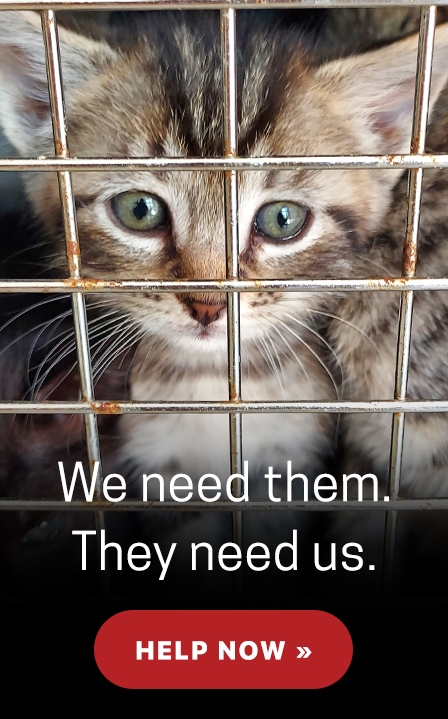In her new book Mission Metamorphosis, American Humane’s president and CEO Dr. Robin Ganzert tells the story of her tenure at American Humane and offers insightful, actionable advice for nonprofit leadership. The following excerpt offers a glimpse at how business lessons are interwoven with stories of American Humane’s lifechanging work.
At American Humane, I wanted to hire leaders to help me steer the organization; I couldn’t do it by myself. Too many CEOs try to move the world by themselves instead of delegating important tasks to the fantastic people they hire. In a survey of 332 companies, roughly half were con-cerned with their employees’ ability to delegate. Many managers worry that the work won’t be quite right unless they do it themselves. That’s not a worry without merit. Managers in the United States spend, on average, 14 percent of their time correcting mistakes made by their subordinates, according to a survey from SHL, a psychometric testing company.
But delegating—and delegating to the right people—is an essential part of any company. It’s not just about handing off tasks but about giv-ing responsibility to qualified leaders to boost productivity and output. A Jordanian study of 160 municipal employees found that those who received delegated authority were more efficient, effective, and empowered. Additionally, by delegating decision-making authority to more employees, organizations can increase their own stability, especially in the event that a top manager goes on leave or is out of pocket.
Many nonprofits fail to delegate effectively. And, even worse, they con-solidate decision-making authority in the boards, becoming overly reliant on them to steer their organizations. They shouldn’t. Leadership teams at nonprofits should be at the helm, navigating through uncertainty and plotting out a path to success.
That doesn’t mean that nonprofit boards are unimportant—far from it—just that they perform a different role from your C-suite team. The members of the governing board are there to provide the fiduciary duties of care, loyalty, and obedience. According to the Association of Governing Boards, this translates into making “careful, good-faith deci-sions in the best interest of the institution consistent with its public or charitable mission, independent of undue influence from any party or from financial interests.”
In practice, the board approves the organization’s strategic direction but does not develop it. It’s up to the leadership team to develop an orga-nization’s strategic direction and present it to the board. It’s the leadership team that should provide all the inspiration for social good, social change, and social impact. They’re the men and women hired by the board to be the experts, to know how to achieve a mission in the social good space. The board hires the CEO to bring the mission to light. Institutions can falter when they don’t have an inspired CEO, who’s on fire for the mission, or when they have a board that tries to run the organization instead of empowering the staff and the leadership to do so.
To my great fortune—and to the great fortune of American Humane—I recruited John Payne to be my new board chair. John was president and CEO of Banfield Pet Hospital, and he had previously been president and general manager of Bayer Healthcare’s Animal Health Division for North America. He was a recognized and highly respected leader in the animal care industry.
And he’s still my board chair today. As board chair, John said it straight: “We’ve got to run this like we would a business.” He gave me the latitude I needed to continue to execute on the bold initiatives of the transforma-tional agenda we had embarked on. This included remaking staff, leader-ship, programs, financial structures—everything. All our operations from head to toe had to be made over. John gave me the latitude to do that and to make good decisions.
Soon after I settled into my role as CEO for American Humane, I started to build and reorganize my own leadership team. For the most part, the existing team wasn’t composed of leaders by training or by trade. This is in great part why we had to engage in the exercise of remaking our mission and programs to survive. We got our leadership team on the same page when we reached agreement on embracing the idea of principled leadership. The commitment we had to principled management within the leadership team is an overarching principle that can be applied to tremendous effect in any kind of organization, whether nonprofit or for-profit; it doesn’t matter the tax status.
I hired a new general counsel, a corporate relations officer, a chief communications officer, a director of marketing and e-philanthropy, and senior philanthropic advisors. I knew we needed to have a chief finan-cial officer based in our headquarters, so I started recruiting for that. I promoted the existing human resources director to be my new chief of staff. I specifically wanted her for the position because our human capi-tal—our people—would be critical to the success of our entire transfor-mation endeavor.
On the program side, I created a new organizational structure designed to provide leadership for the four program planks. I experienced a stroke of particularly good fortune when a former leader at American Humane during the 1990s—and a visionary in animal welfare and veterinary med-icine—approached me. She had recently retired from her position as pres-ident and CEO of a major animal philanthropy. She said to me, “You know, I love this institution so much. It’s so important. I want to come on and serve the cause.” So she became my chief veterinary advisor.
By February 2012, I had all of these hires in place with more to come. By hiring virtuous, hardworking leaders who were empowered to fulfill their roles, we ensured success in implementing our mission, nurturing a positive culture, reorganizing our programs, getting our finances in order, and building our brand.


